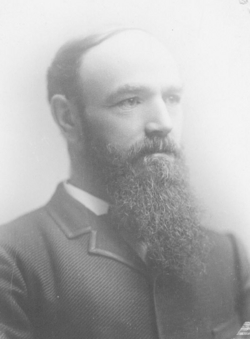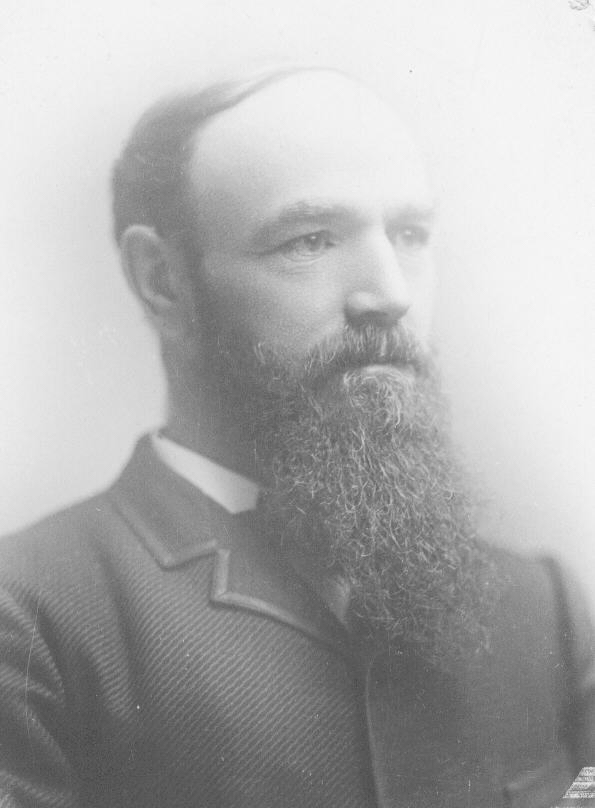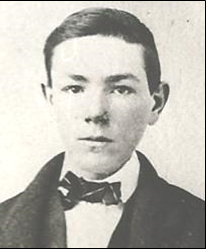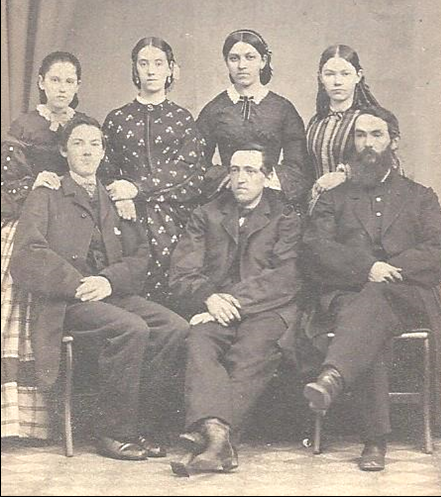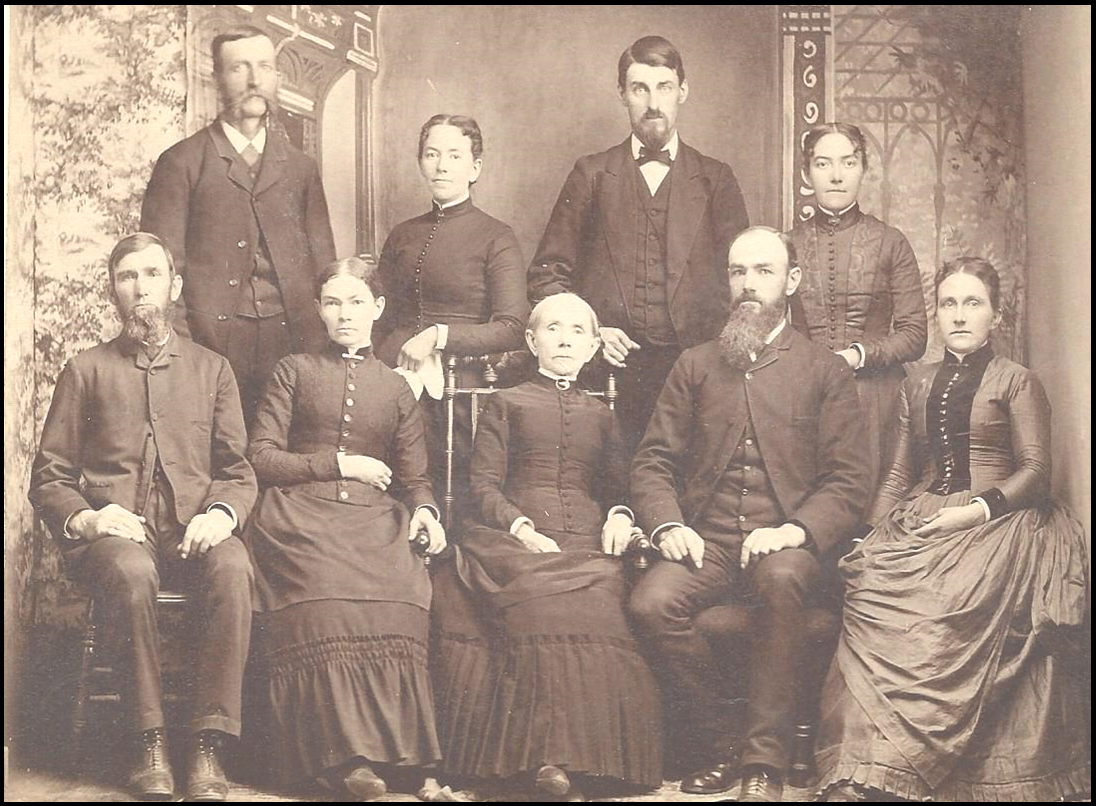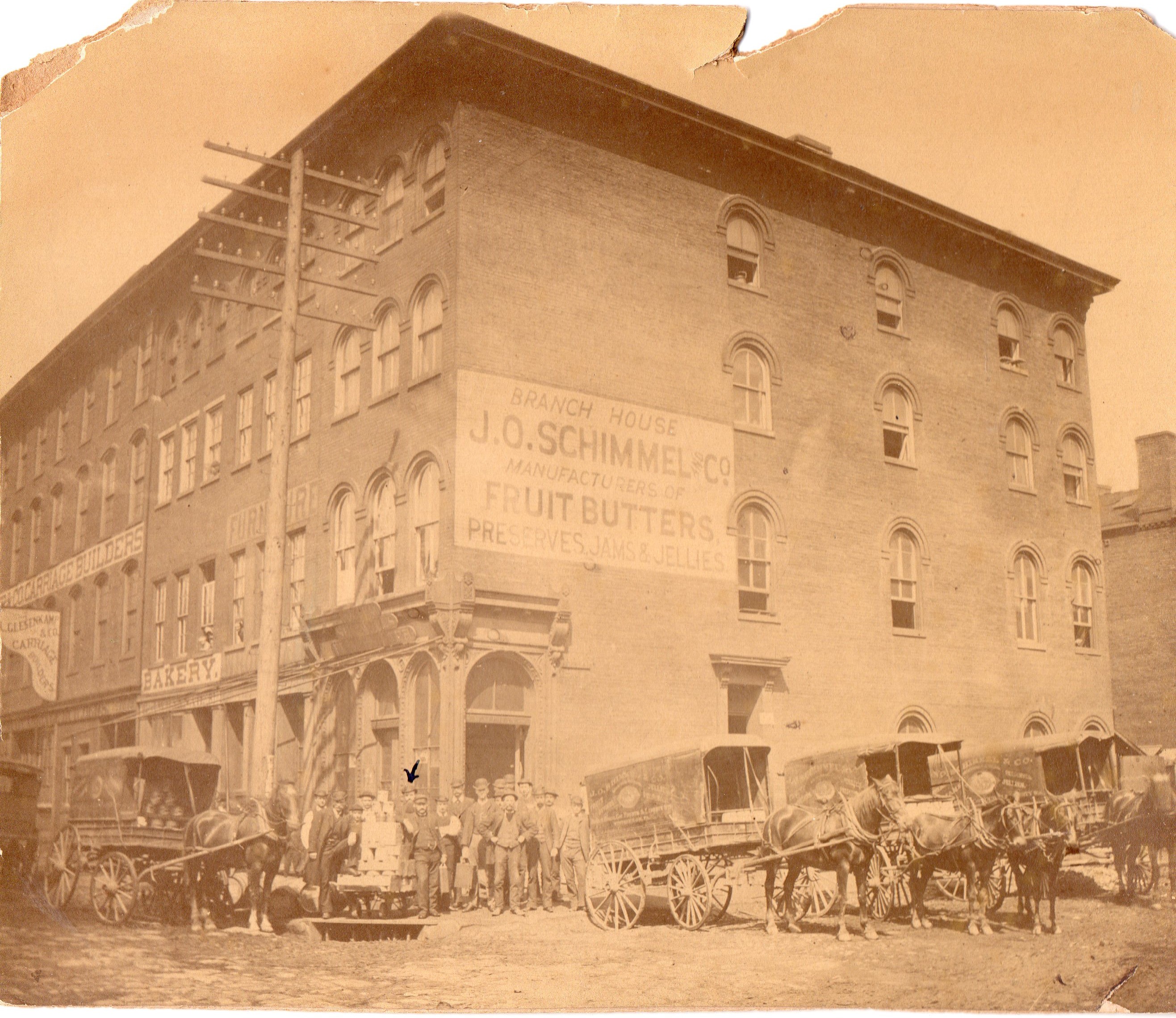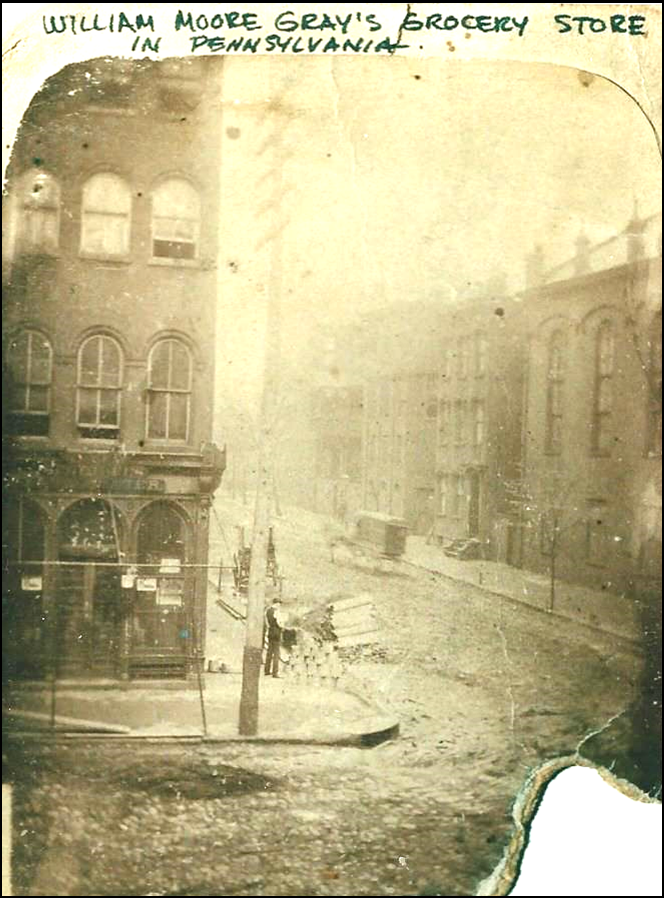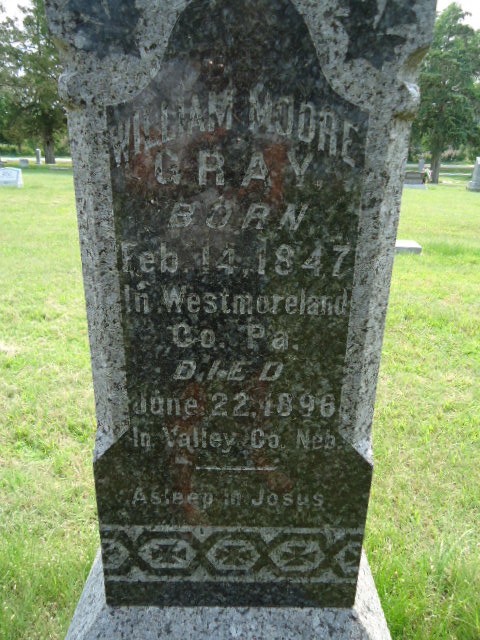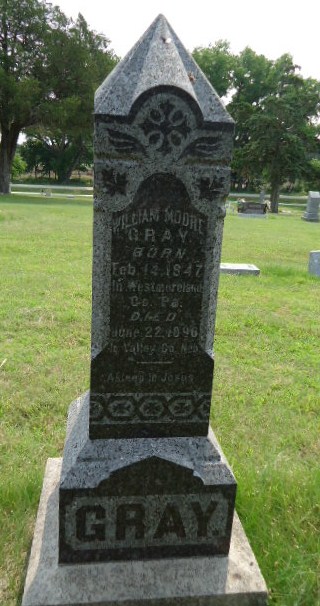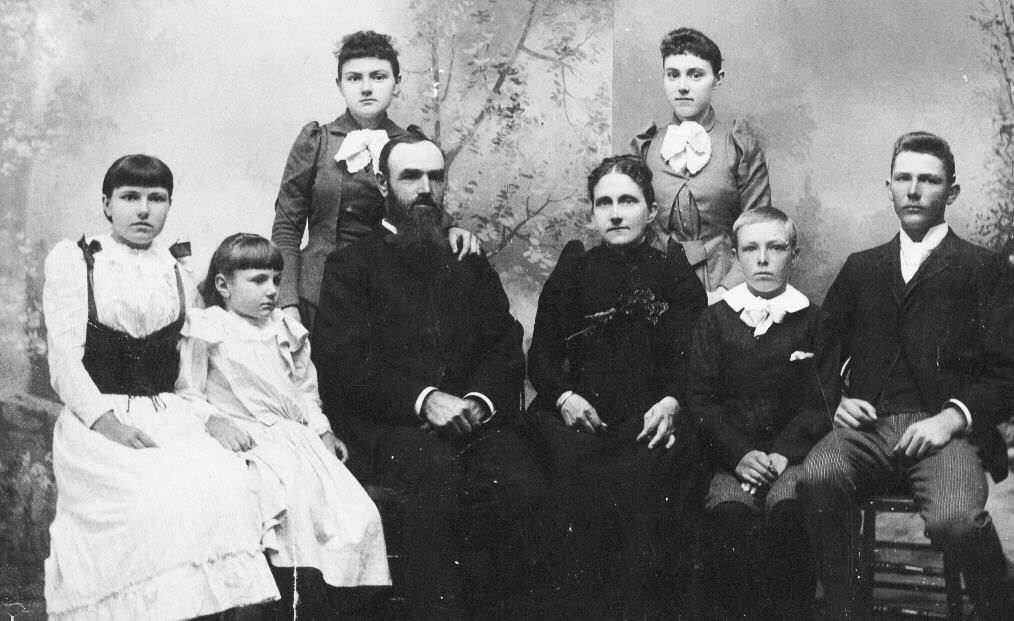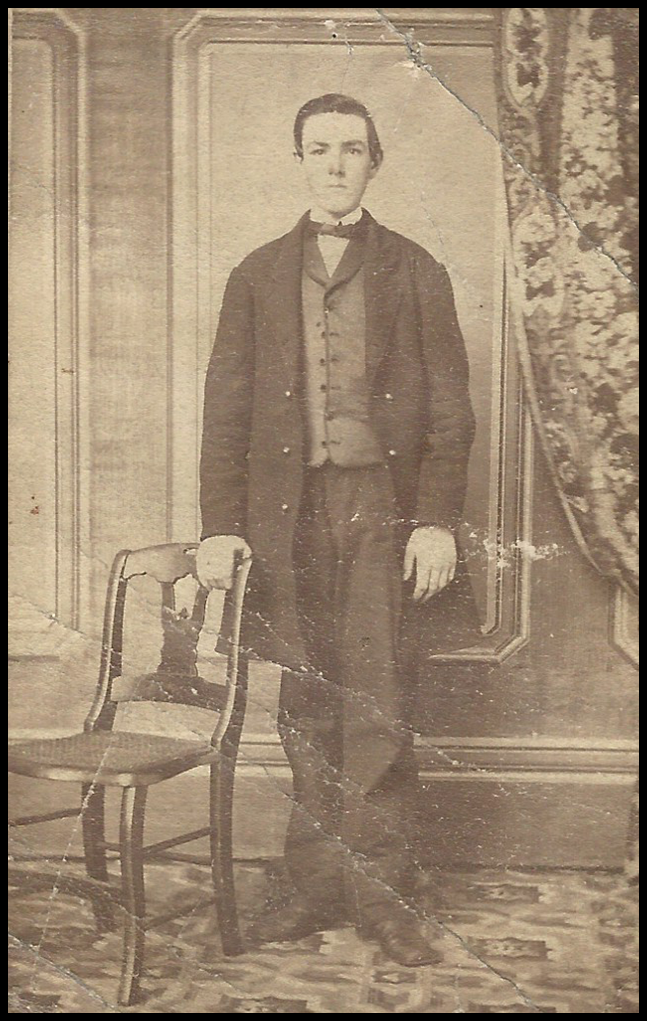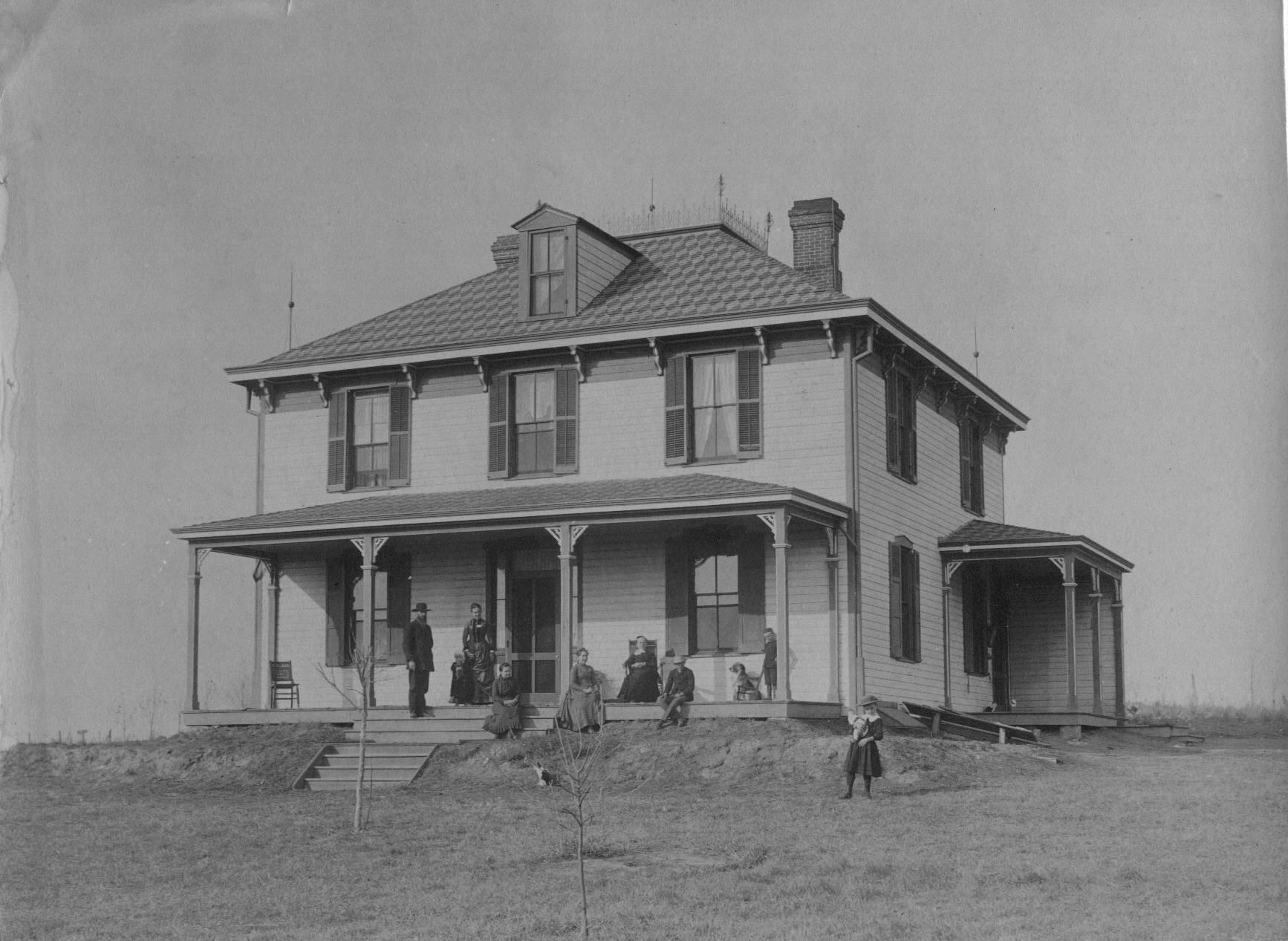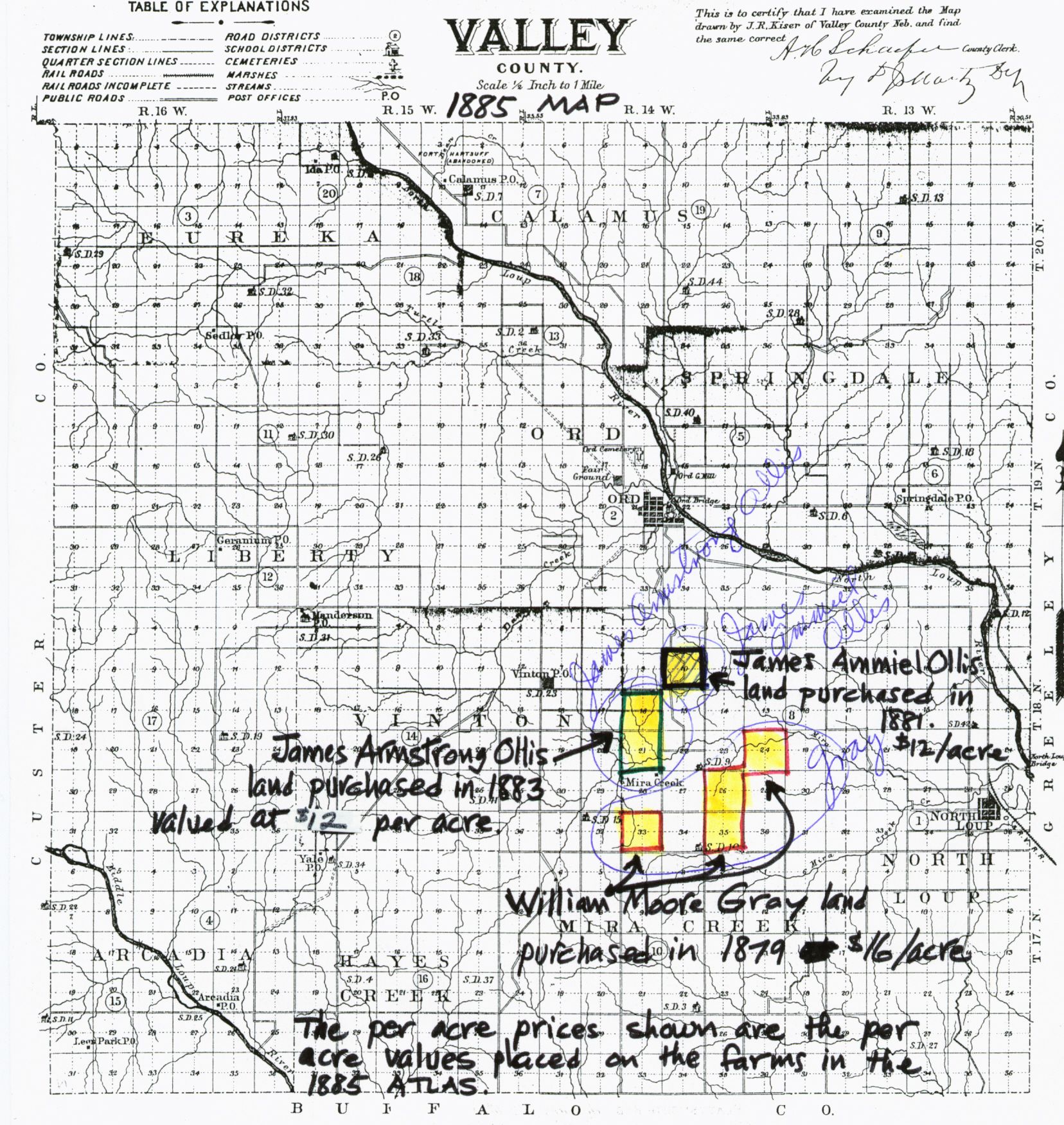He went by his middle name Moore. His father died when he was age 12, after which Moore worked for farmers in the area in summers and went to school in the winters. Later he worked for a wagon maker. Later he moved to Pittsburgh where he found employment and attended school. In 1869 he went into the retail grocery business, which developed into a wholesale business, where he worked until 1884 when he moved to Mira Valley in Valley County, Nebraska. There he farmed and entered public service. He was Chairperson of the Valley County Board for quite some time.
Moore was a member of the Nebraska Senate in about 1890. They moved to Nebraska (to Mira Valley area south of Ord) in 1884. He died of cancer. The Gray family was always the host for all the families of what was called "The Pennsylvania Colony" in Mira Valley every Christmas day. Thanksgiving day was all at the Alter home and New Years day at the Petty home. These families were all friends in the Pittsburgh area in Pennsylvania, and all moved to Mira Valley at about the same time, where they remained close friends. There was some intermarriage among these families.
Moore was born in Westmoreland County, just east of Pittsburgh, PA. His parents were William Gray (who died about 1859) and Mary Swayne (Reynolds) (1815-1903). Moore was the 8th of 11 children. Those children were: Phineas Reynolds G., George G., Anna Jane G., James Harland G., Richard R. G., Margaret "Maggie" G., Robert G., William Moore G., James G., Mary Elizabeth "Lizzie" G., and Sarah Alice "Allie" G.
Moore died in his home in Mira Valley south of Ord, Nebraska. Moore died at 3:57 PM on a Monday. He had been quite ill for two years. His funeral service was held in his home, Wednesday, two days after his death. His casket-bearers were men from the Woodman Insurance Company, with whom he had a $2,000 life insurance policy. His daughter Helen wrote that his death was "generally supposed to be due to heart trouble (dropsy), which entirely distroyed one lung and part of the other before he died. Dr. Haldeman, and A. M. Daniels undertaker, with Robert Gray present performed an autopsy and found a large growth in abndomen." (The Robert Gray referred to here is presumably Moore's son. Moore had a brother Robert, as well, but brother Robert apparantly never lived in Nebraska, but remained in Pennsylvania.)
The Gray land holdings were divided amont the Gray chidlren upon the death of Moore and Lou, with the grand family three-story home, built in 1884, going to son Wilmore. In 1915, when Wilmore became associated with a hardware store west of Milford's Store in Ord, he moved his family into Ord, where they remained for five years before moving to Kimball County in western Nebraska. The Gray place in Mira Valley sold, in 1920, to Oscar Collins, and subsequently, in 1942, to Henry Lange who raised his family there, and farmed the property very successfully. The house accidentally burned down on Saturday, March 30, 1985. It was being renovated at the time.
The following is taken from page 140 of a History of Mira Valley, written by Mary Bell in about 1985: The Presbyterian Church (in Mira Valley) was organized in 1880 and at the time given the name Wilson Church of Mira Valley, in memory of Rev. S. J. Wilson, D. D. of Allegheny Theological Seminary in Pennsylvania. (Note C actually the church was named in honor of Dr. Wilson, not in his memory, because he was still living. And he was the group's beloved pastor back in Aspinwall, PA, though he may have also taught at the seminary, which was later named Pittsburgh Theological Seminary. JKCook)
(Almost all the members of Wilson Presbyterian Church were members of the so-called Pennsylvania Colony C those friends and neighbors who had immigrated, almost as a group from Aspinwall, PA in about 1884. JKC) The first members were: Mr. and Mrs. W. D. Alter, Mr. and Mrs. George M. Petty, Mr. and Mrs. T. J. Nethery, Mr. I. N. Swan, Mrs. Mary W. Brown and her unmarried children, Ella, William and Wilson. Almost every month new members joined, mostly by transfer of membership from some church in the East. Records showed that on March 22, 1885 the newly built church was formally dedicated. A parsonage was later built beside the church.
The people of this church were generally called the Pennsylvania Colony, or simply "The Colony." They came mostly from Pittsburgh and surrounding territory. As is frequently the case, there were many family relationships among the group. Will Alter was a brother of the widow Mary Brown, Mrs. George Petty and Mrs. W. M. Gray were daughters of Mrs. Brown, and W. M. Gray was a brother to both Mrs. Will Armstrong and Mrs. Will Alter. Few of the early church members were not in some way related. The one exception was J. A. Ollis (that's James Ammiel Ollis, not his father James Armstrong Ollis, who came later), who came from Appanoose, Illinois and was not a relative of any of the colony group. Although most of the Pennsylvania Colony were city-bred people and poorly prepared to face the rigors of pioneer life, they were highly influential in the community for a number of years, adding a beneficial religious and cultural element to the area. William Moore Gray was elected Valley County's Senator from 1893 to 1895, and J. A. Ollis Jr. (that's James Ammiel Ollis, again) was Senator from 1909 to 1913.
As time passes members of The Colony drifted into other fields of activity so that by 1924 so few of them remained in the valley that the church was disbanded and the remaining members transferred to the Ord Presbyterian Church. The building itself was razed in 1926.
He went by his middle name Moore. His father died when he was age 12, after which Moore worked for farmers in the area in summers and went to school in the winters. Later he worked for a wagon maker. Later he moved to Pittsburgh where he found employment and attended school. In 1869 he went into the retail grocery business, which developed into a wholesale business, where he worked until 1884 when he moved to Mira Valley in Valley County, Nebraska. There he farmed and entered public service. He was Chairperson of the Valley County Board for quite some time.
Moore was a member of the Nebraska Senate in about 1890. They moved to Nebraska (to Mira Valley area south of Ord) in 1884. He died of cancer. The Gray family was always the host for all the families of what was called "The Pennsylvania Colony" in Mira Valley every Christmas day. Thanksgiving day was all at the Alter home and New Years day at the Petty home. These families were all friends in the Pittsburgh area in Pennsylvania, and all moved to Mira Valley at about the same time, where they remained close friends. There was some intermarriage among these families.
Moore was born in Westmoreland County, just east of Pittsburgh, PA. His parents were William Gray (who died about 1859) and Mary Swayne (Reynolds) (1815-1903). Moore was the 8th of 11 children. Those children were: Phineas Reynolds G., George G., Anna Jane G., James Harland G., Richard R. G., Margaret "Maggie" G., Robert G., William Moore G., James G., Mary Elizabeth "Lizzie" G., and Sarah Alice "Allie" G.
Moore died in his home in Mira Valley south of Ord, Nebraska. Moore died at 3:57 PM on a Monday. He had been quite ill for two years. His funeral service was held in his home, Wednesday, two days after his death. His casket-bearers were men from the Woodman Insurance Company, with whom he had a $2,000 life insurance policy. His daughter Helen wrote that his death was "generally supposed to be due to heart trouble (dropsy), which entirely distroyed one lung and part of the other before he died. Dr. Haldeman, and A. M. Daniels undertaker, with Robert Gray present performed an autopsy and found a large growth in abndomen." (The Robert Gray referred to here is presumably Moore's son. Moore had a brother Robert, as well, but brother Robert apparantly never lived in Nebraska, but remained in Pennsylvania.)
The Gray land holdings were divided amont the Gray chidlren upon the death of Moore and Lou, with the grand family three-story home, built in 1884, going to son Wilmore. In 1915, when Wilmore became associated with a hardware store west of Milford's Store in Ord, he moved his family into Ord, where they remained for five years before moving to Kimball County in western Nebraska. The Gray place in Mira Valley sold, in 1920, to Oscar Collins, and subsequently, in 1942, to Henry Lange who raised his family there, and farmed the property very successfully. The house accidentally burned down on Saturday, March 30, 1985. It was being renovated at the time.
The following is taken from page 140 of a History of Mira Valley, written by Mary Bell in about 1985: The Presbyterian Church (in Mira Valley) was organized in 1880 and at the time given the name Wilson Church of Mira Valley, in memory of Rev. S. J. Wilson, D. D. of Allegheny Theological Seminary in Pennsylvania. (Note C actually the church was named in honor of Dr. Wilson, not in his memory, because he was still living. And he was the group's beloved pastor back in Aspinwall, PA, though he may have also taught at the seminary, which was later named Pittsburgh Theological Seminary. JKCook)
(Almost all the members of Wilson Presbyterian Church were members of the so-called Pennsylvania Colony C those friends and neighbors who had immigrated, almost as a group from Aspinwall, PA in about 1884. JKC) The first members were: Mr. and Mrs. W. D. Alter, Mr. and Mrs. George M. Petty, Mr. and Mrs. T. J. Nethery, Mr. I. N. Swan, Mrs. Mary W. Brown and her unmarried children, Ella, William and Wilson. Almost every month new members joined, mostly by transfer of membership from some church in the East. Records showed that on March 22, 1885 the newly built church was formally dedicated. A parsonage was later built beside the church.
The people of this church were generally called the Pennsylvania Colony, or simply "The Colony." They came mostly from Pittsburgh and surrounding territory. As is frequently the case, there were many family relationships among the group. Will Alter was a brother of the widow Mary Brown, Mrs. George Petty and Mrs. W. M. Gray were daughters of Mrs. Brown, and W. M. Gray was a brother to both Mrs. Will Armstrong and Mrs. Will Alter. Few of the early church members were not in some way related. The one exception was J. A. Ollis (that's James Ammiel Ollis, not his father James Armstrong Ollis, who came later), who came from Appanoose, Illinois and was not a relative of any of the colony group. Although most of the Pennsylvania Colony were city-bred people and poorly prepared to face the rigors of pioneer life, they were highly influential in the community for a number of years, adding a beneficial religious and cultural element to the area. William Moore Gray was elected Valley County's Senator from 1893 to 1895, and J. A. Ollis Jr. (that's James Ammiel Ollis, again) was Senator from 1909 to 1913.
As time passes members of The Colony drifted into other fields of activity so that by 1924 so few of them remained in the valley that the church was disbanded and the remaining members transferred to the Ord Presbyterian Church. The building itself was razed in 1926.
